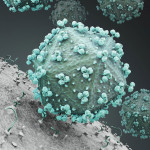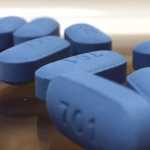Despite the fact that the vast majority of gay men testing for HIV at a Toronto clinic were at high risk of infection, just a small fraction actually thought so, indicating a potential roadblock for usage of pre-exposure prophylaxis (PrEP), aidsmap reports. Investigators questioned 423 men who have sex with men (MSM) about their sexual risk histories and their attitudes about PrEP and presented their findings at a London conference titled Controlling the HIV Epidemic with Antiretrovirals: From Consensus to Implementation.
Fifty percent said they would be willing to take the daily regimen of PrEP, which consists of the antiretroviral Truvada (emtricitabine/tenofovir) and which studies have show can greatly reduce the risk of acquiring HIV if taken as directed. Because the investigators assumed that in order to use PrEP men would need also to consider themselves at risk for HIV infection, they asked men about their perceived risk. Seventeen percent of the men believed they had either “more than a little risk” or “a lot of risk” of acquiring the virus. Three quarters of this group said they were willing to take PrEP.
Of the men who were willing to use PrEP, only 54 men (12.8 percent of the entire group) saw themselves as at risk, while 156 men (36.9 percent of the entire group) out of the PrEP-willing group did not consider themselves at risk.
In order to more objectively assess the participants’ risk of infection, the investigators used a screening tool created by the U.S. Centers for Disease Control and Prevention (CDC) known as HIRI-MSM. They found that 77 percent of the men were actually at high risk. (The accuracy of the assessment tool is up for debate, however.)
The scientists found that the men who were rated as at increased risk of HIV infection according to the objective assessment were no more likely to express willingness to take PrEP than those who were assessed as being at lowered risk. Only men’s subjective risk played into their willingness.
Only 46 of the men (10.6 percent) were willing to use PrEP and had both a subjectively and an objectively elevated risk of acquiring HIV.
To read the aidsmap story, click here.
To see the study abstract, click here and go to abstract 22.
Advertisement
Advertisement
Advertisement






Comments
Comments